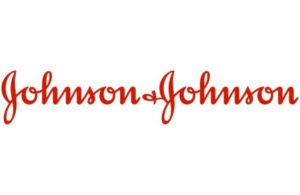 Johnson & Johnson continues to face legal challenges over allegations that its talcum powder causes cancer. Recently, a judge dismissed the company’s latest attempt to settle thousands of lawsuits through bankruptcy, marking the second time J&J’s bankruptcy strategy has been rebuffed. We take a look at the timeline of the talc litigation below.
Johnson & Johnson continues to face legal challenges over allegations that its talcum powder causes cancer. Recently, a judge dismissed the company’s latest attempt to settle thousands of lawsuits through bankruptcy, marking the second time J&J’s bankruptcy strategy has been rebuffed. We take a look at the timeline of the talc litigation below.
Johnson & Johnson is planning on spinning off its consumer unit, which will be known as “Kenvue.” The separation of the unit could happen later this year.
The company’s talc-related troubles started in 2009 when the first lawsuit was filed against J&J alleging its talc products caused a woman’s ovarian cancer. By 2016, J&J suffered its first significant legal defeat with a $72 million verdict. In 2018, a jury ordered the company to pay $4.69 billion to cancer victims.
Johnson & Johnson began selling its Baby Powder brand of talcum powder in 1894.
Now, the company has stopped selling the product in North America. J&J announced that decision in May 2020 facing rising legal costs. It has asserted that its products were safe. In 2021, J&J implemented a contentious bankruptcy strategy to shield itself from legal liability, transferring talc lawsuits to a new subsidiary, LTL Management, which immediately filed for Chapter 11.
An appeals court overturned this move in January, ruling that J&J could not offload liabilities while financially sound. Undeterred, LTL filed for bankruptcy again in July 2023, citing a proposed $8.9 billion settlement deal. A judge, however, rejected the petition, ruling that the talc lawsuits did not put LTL into enough “financial distress.”
Now, after almost 38,000 lawsuits and roughly $4 billion in payouts, the company continues to navigate litigation while phasing out talc internationally. The company also plans to appeal the latest bankruptcy dismissal. But after more than a decade of courtroom battles, J&J remains embroiled in allegations that its iconic talc products posed a risk to consumers.
A J&J talc litigation timeline

Key moments in Johnson & Johnson’s talc litigation history, from the first filed lawsuit in December 2009 to the latest court ruling in July 2023.
An overview of important events in the talcum-powder litigation:
- 1957-1958: Reports from a consulting lab indicate that talc from J&J’s Italian supplier contained contaminants described as “fibrous” and “acicular” tremolite, a type of asbestos, according to Reuters.
- 1967: J&J discovers traces of two minerals that can occur as asbestos in its Vermont talc mine.
- 1971: The FDA launches an inquiry into asbestos in talcum powders after New York City’s environmental protection chief reveals that two unspecified brands of cosmetic talc appear to contain asbestos. J&J stresses that its baby powder does not contain asbestos.
- 1972–1975: Despite its public denial, internal J&J tests found asbestos in its talc, Reuters noted.
- 1973: J&J applies for patents on a process to remove asbestos from talc, hinting the company was aware of contamination, according to Reuters.
- 1976: As the FDA mulls limits on asbestos in cosmetic talc products, J&J tells the regulator that it had not detected any asbestos in its talc samples from December 1972 to October 1973.
- 1980: J&J begins to offer a cornstarch formulation of its Baby Powder.
- 1999: Darlene Coker, who developed mesothelioma, drops her lawsuit against J&J for lack of evidence, despite her lawyer’s belief that J&J’s talcum powder was the cause. Reuters reported on Coker’s case.
- 2009: The FDA commissions tests on 34 samples, including a bottle of J&J Baby Powder, but no asbestos is detected.
- December 4, 2009: Deane Berg files first lawsuit against J&J alleging its talcum products caused ovarian cancer, marking the start of ongoing litigation. Berg would go on to win the case in 2013, but the jury did not award damages.
- February 22, 2016: A jury orders J&J to pay $72 million in damages in a civil case. The decision was its first major courtroom loss in the talc cases.
- July 12, 2018: J&J ordered to pay a $4.69 billion to cancer victims, stoking a surge of lawsuits.
- May 19, 2020: With legal costs mounting, J&J stops selling talc baby powder in North America amid safety concerns.
- October 14, 2021: J&J shifts talc lawsuits to a new subsidiary, LTL Management, which declares bankruptcy.
- August 11, 2022: J&J announces plans to phase out global sales of talc baby powder, transitioning to cornstarch formula.
- January 30, 2023: An appeals court rebuffed J&J’s bankruptcy strategy, ruling it improperly offloaded lawsuits.
- July 28, 2023: A judge rejects J&J’s second attempt at a bankruptcy settlement, handing the company another setback.
Analysis
In recent years, J&J has faced a fair degree of financial turbulence. Prominent headwinds include the talcum-powder litigation and the COVID-19 pandemic. While the initial talc lawsuit in 2009 had little impact, the escalating lawsuits likely contributed to a stock dip in early 2020 along with the pandemic. In response, J&J made a strategic decision in May 2020 to stop selling talc powder in North America. Despite some periods of stock volatility, J&J’s stock has been mostly resilient overall, rebounding 30% in 2020 on vaccine progress — though COVID-19 vaccine sales disappointed. In 2022, the company’s pharma division raked in $52.6 billion in revenue. Its medical device sales and strategic spin-off of its consumer unit also appear to support growth amid economic uncertainty. Still, the protracted talc litigation remains a complex financial variable, though other factors continue to drive J&J’s stock performance.





Hi there, thanks for the piece. How come there is no mention of Darlene Coker’s case against J&J in 1997? I thought that was the first case against J&J relating to talc products, if I am mistaken let me know! Thank you again! https://www.reuters.com/investigates/special-report/johnsonandjohnson-cancer/
Thanks for the feedback, Suzanna. I have provided multiple new items based on your feedback and the Reuters article.
I have a claim in checking to see outcome
How is it that this litigation has been dragged on for as long as it has? I thought that the right to a speedy trial was assured to protect both the accused, as well as the victims and their families? What kind of justice system allows for such blatant sidestepping of financial obligations? It’s a mockery of the entire court system that they have been able to bury this in paperwork for this long. How many litigants have died since the class action suit began? How many will be dead before the claimants are paid out? Shouldn’t the pain and suffering be increased for each additional year that they drag their feet or Texas-Two-Step or file yet another fraudulent bankruptcy??